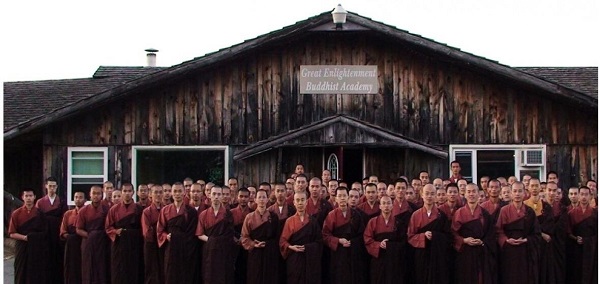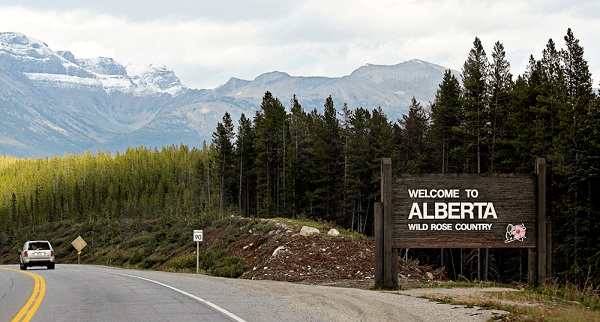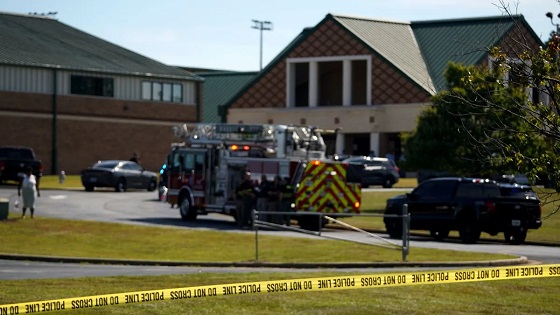Alberta
New gas reserves take Canada into global top 10
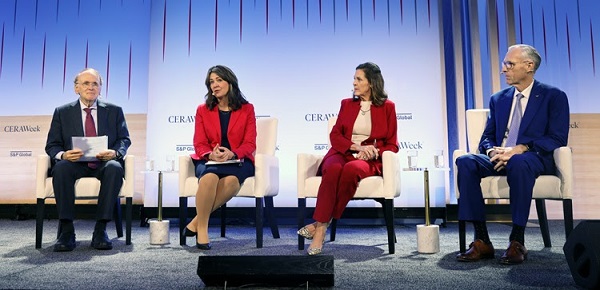
Left to right – Daniel Yergin, vice chairman S&P Global; Hon. Danielle Smith, Premier of Alberta; Hon. Susan B. Bourgeois., Louisiana Secretary of Economic Development; and Jim Fitterling, CEO Dow Inc.
New Alberta reserves study finds Alberta’s gas reserves have increased six-fold, moving Canada’s gas reserves into the top 10 globally.
Alberta has always been a giant when it comes to natural gas, but after looking carefully at the Montney, Duvernay and the Deep Basin, new data has identified that the total gas resource in ground exceeds 1,360 trillion cubic feet (TCF). Of this, 130TCF is proved and recoverable gas reserves. For comparison, the latest U.S. government reserve number, using comparable methodologies, for Texas natural gas is 170TCF.
|
Gas (TCF) |
Oil (billion barrels) |
|
| Current Resource in Ground* |
1360 |
1820 |
| Previous AER Reserve number |
24 |
159.4 |
| 2025 McDaniel Proved Reserve study |
130** |
167*** |
| EIA Texas Reserves (2023) |
170 |
20 |
| * resource in ground number reflects an estimate of total resource in place.
** with proved and probable 144TCF. *** oil reserve studies for all basins not yet complete. |
||
Adding these new gas reserves to other provinces’ reserves sees Canada’s overall gas number more than double and results in Canada’s ranking moving from number 15 to number nine globally.
When it comes to oil reserves, Alberta remains a titan with a total resource in ground number of 1.8 trillion barrels. Oilsands proven reserves are more than 165 billion recoverable barrels and there is other growth. For example, new opportunities like the Clearwater basin which has almost two billion barrels of new reserves. For comparison, Texas’ proved oil reserves sit at 20 billion barrels.
Alberta’s global ranking for oil has not changed, however the increase of seven billion additional proved barrels does result in extending the province’s total years of overall oil supply to 137 years.
“Alberta’s responsible energy sector has embraced technology and innovation, and these advancements have allowed us to unlock material gas reserves that were previously not accounted for. While other jurisdictions could face inventory concerns in the future, Alberta’s reserves will be essential for North America to continue accessing affordable energy.”
“This announcement reinforces that Alberta has the reserves needed to enhance long-term energy security for our trading partners. With vast amounts of gas, oil and liquids, Alberta’s energy sector is ready and willing to work with our U.S. partners to achieve global energy security.”
The study to review Alberta’s natural gas and oil reserves was commissioned by the Alberta Energy Regulator and was conducted by McDaniel and Associates Consultants. McDaniel is still completing this work and a final number for all fields and growth areas will be completed in the coming weeks.
“The continued expansion of Alberta’s reserves offers immense potential for long-term energy security, ensuring a reliable source of energy to support both domestic needs and international markets.”
Alberta’s government is working closely with industry to determine all options for egress to market in support of our aspiration to double Alberta’s oil and gas production.
Faced with uncertainty around trade and security, Alberta’s government remains focused on diplomacy and continuing to build a resilient and diversified economy that is better positioned to withstand external shocks and ensure long-term prosperity.
Background
- Reserves are the most accurate measure of a jurisdiction’s future oil and gas potential. McDaniel and the Alberta Energy Regulator use the Canadian Oil and Gas Evaluation Handbook methodology to perform reserve studies.
- Reserves are estimated volumes of hydrocarbon resources that analysis of geologic and engineering data demonstrates with reasonable certainty are recoverable under existing economic and operating conditions. Reserves estimates change from year to year because of:
- price and cost changes
- new discoveries
- thorough appraisals of existing fields
- existing reserves production
- new and improved production techniques and technologies
Quick facts
- In 2023, Alberta produced 10.9 billion cubic feet per day (bcf/d) of natural gas. This was 61 per cent of Canadian natural gas production in 2023.
- Alberta is also the largest supplier of natural gas to the U.S. In 2023, Alberta exported 4.54 bcf/d to the U.S.
- Alberta oil directly supports more than 50 U.S.-based refineries with direct investment in more than 20 U.S. states, and is essential to affordability, growth, economic prosperity and energy security in the U.S.
- The U.S. Midwest continues to be the largest market for Canadian crude oil, followed by the U.S. Gulf Coast.
- As 2025 began, U.S. imports of crude oil from Canada reached a weekly record 4.42 million barrels per day, with the majority supplied by Alberta.
Alberta
Click here to help choose Alberta’s new licence plate design

Your province, your plate
For the first time in more than 40 years, Alberta is refreshing its licence plate with a Strong and Free motto, and the final look will be decided by Albertans.
From Oct. 15 until Nov. 5, Albertans can take part in a tournament-style online vote for a new provincial licence plate design that proudly reflects who we are every time we hit the road.
The new licence plate will be available in late 2026 and will be based on a “Strong and Free” theme, echoing the Latin motto of our province and reflecting Alberta’s bold identity, economic strength and deep-rooted provincial pride. The motto’s inclusion on the licence plates will also serve as a nod to Canada’s national anthem and Alberta’s position as a strong and sovereign province within a united Canada.
“From our wide-open landscapes to our entrepreneurial spirit, Alberta has so much to be proud of, and our new licence plate will reflect that pride. For the first time in four decades, Albertans will choose how we tell that story. I look forward to seeing which design is selected to show the world that this is the land of the strong and free.”
With options that include famous Alberta landmarks such as the Three Sisters Mountains, and long-standing symbols of our province’s core industries including agriculture and energy production, the potential plates each contain symbols of Alberta’s beauty, history and spirit.
In the first phase of voting, Albertans can vote for their favourite of eight unique concepts that incorporate Alberta’s unique landscape and history. Following the first phase, four designs will advance to the next round of voting where the top two will be selected, and subsequently, there will be a final vote for the winning plate concept. The winning new licence plate will be announced during the fall session of the legislature.
“Alberta is strong and free, and Albertans will have the opportunity to choose a new licence plate that captures that spirit. The new licence plate will be a fresh design that every Albertan will be proud to show off, whether they’re driving to work, heading to the lake or exploring North America.”
If an Albertan wants to replace their current plate for the new licence plate once it is released, they can voluntarily pay a $28 fee. Alternatively, Albertans could obtain a new plate on their vehicle registration renewal date at no additional cost. Motorists may also continue using the previous licence plate once the new licence plate is brought onboard, provided it is still in good condition.
Quick facts
- Alberta’s current licence plate was designed in 1984.
- In 2021, Alberta began a transition from painted to reflective plates with the same design.
- The new designs each incorporate reflective technology to improve readability for law enforcement and automated systems in low-light conditions, and also meet international standards for visibility, legibility and counterfeit resistance.
Related information
Licence plate designs. Click link above to vote
Alberta
Enbridge CEO says ‘there’s a good reason’ for Alberta to champion new oil pipeline

Enbridge CEO Greg Ebel. The company’s extensive pipeline network transports about 30 per cent of the oil produced in North America and nearly 20 per cent of the natural gas consumed in the United States. Photo courtesy Enbridge
From the Canadian Energy Centre
B.C. tanker ban an example of federal rules that have to change
The CEO of North America’s largest pipeline operator says Alberta’s move to champion a new oil pipeline to B.C.’s north coast makes sense.
“There’s a good reason the Alberta government has become proponent of a pipeline to the north coast of B.C.,” Enbridge CEO Greg Ebel told the Empire Club of Canada in Toronto the day after Alberta’s announcement.
“The previous [federal] government’s tanker ban effectively makes that export pipeline illegal. No company would build a pipeline to nowhere.”
It’s a big lost opportunity. With short shipping times to Asia, where oil demand is growing, ports on B.C.’s north coast offer a strong business case for Canadian exports. But only if tankers are allowed.
A new pipeline could generate economic benefits across Canada and, under Alberta’s plan, drive economic reconciliation with Indigenous communities.
Ebel said the tanker ban is an example of how policies have to change to allow Canada to maximize its economic potential.
Repealing the legislation is at the top of the list of needed changes Ebel and 94 other energy CEOs sent in a letter to Prime Minister Mark Carney in mid-September.
The federal government’s commitment to the tanker ban under former Prime Minister Justin Trudeau was a key factor in the cancellation of Enbridge’s Northern Gateway pipeline.
That project was originally targeted to go into service around 2016, with capacity to ship 525,000 barrels per day of Canadian oil to Asia.
“We have tried to build nation-building pipelines, and we have the scars to prove it. Five hundred million scars, to be quite honest,” Ebel said, referencing investment the company and its shareholders made advancing the project.
“Those are pensioners and retail investors and employees that took on that risk, and it was difficult,” he said.
For an industry proponent to step up to lead a new Canadian oil export pipeline, it would likely require “overwhelming government support and regulatory overhaul,” BMO Capital Markets said earlier this year.
Energy companies want to build in Canada, Ebel said.
“The energy sector is ready to invest, ready to partner, partner with Indigenous nations and deliver for the country,” he said.
“None of us is calling for weaker environmental oversight. Instead, we are urging government to adopt smarter, clearer, faster processes so that we can attract investment, take risks and build for tomorrow.”
This is the time for Canadians “to remind ourselves we should be the best at this,” Ebel said.
“We should lead the way and show the world how it’s done: wisely, responsibly, efficiently and effectively.”
With input from a technical advisory group that includes pipeline leaders and Indigenous relations experts, Alberta will undertake pre-feasibility work to identify the pipeline’s potential route and size, estimate costs, and begin early Indigenous engagement and partnership efforts.
The province aims to submit an application to the Federal Major Projects Office by spring 2026.
-

 Censorship Industrial Complex1 day ago
Censorship Industrial Complex1 day agoCanada’s privacy commissioner says he was not consulted on bill to ban dissidents from internet
-

 Energy2 days ago
Energy2 days agoIndigenous Communities Support Pipelines, Why No One Talks About That
-

 Alberta1 day ago
Alberta1 day agoEnbridge CEO says ‘there’s a good reason’ for Alberta to champion new oil pipeline
-

 Business1 day ago
Business1 day agoFormer Trump Advisor Says US Must Stop UN ‘Net Zero’ Climate Tax On American Ships
-

 Business2 days ago
Business2 days agoFinance Committee Recommendation To Revoke Charitable Status For Religion Short Sighted And Destructive
-

 Alberta2 days ago
Alberta2 days agoOil Sands are the Costco of world energy – dependable and you know exactly where to find it
-

 Health2 days ago
Health2 days agoColorado gave over 500 people assisted suicide drugs solely for eating disorders in 2024
-
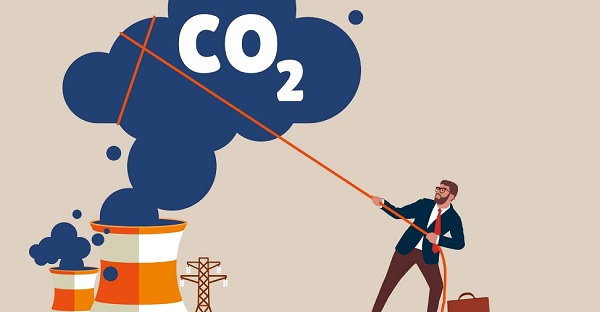
 Alberta2 days ago
Alberta2 days agoThe Technical Pitfalls and Political Perils of “Decarbonized” Oil
